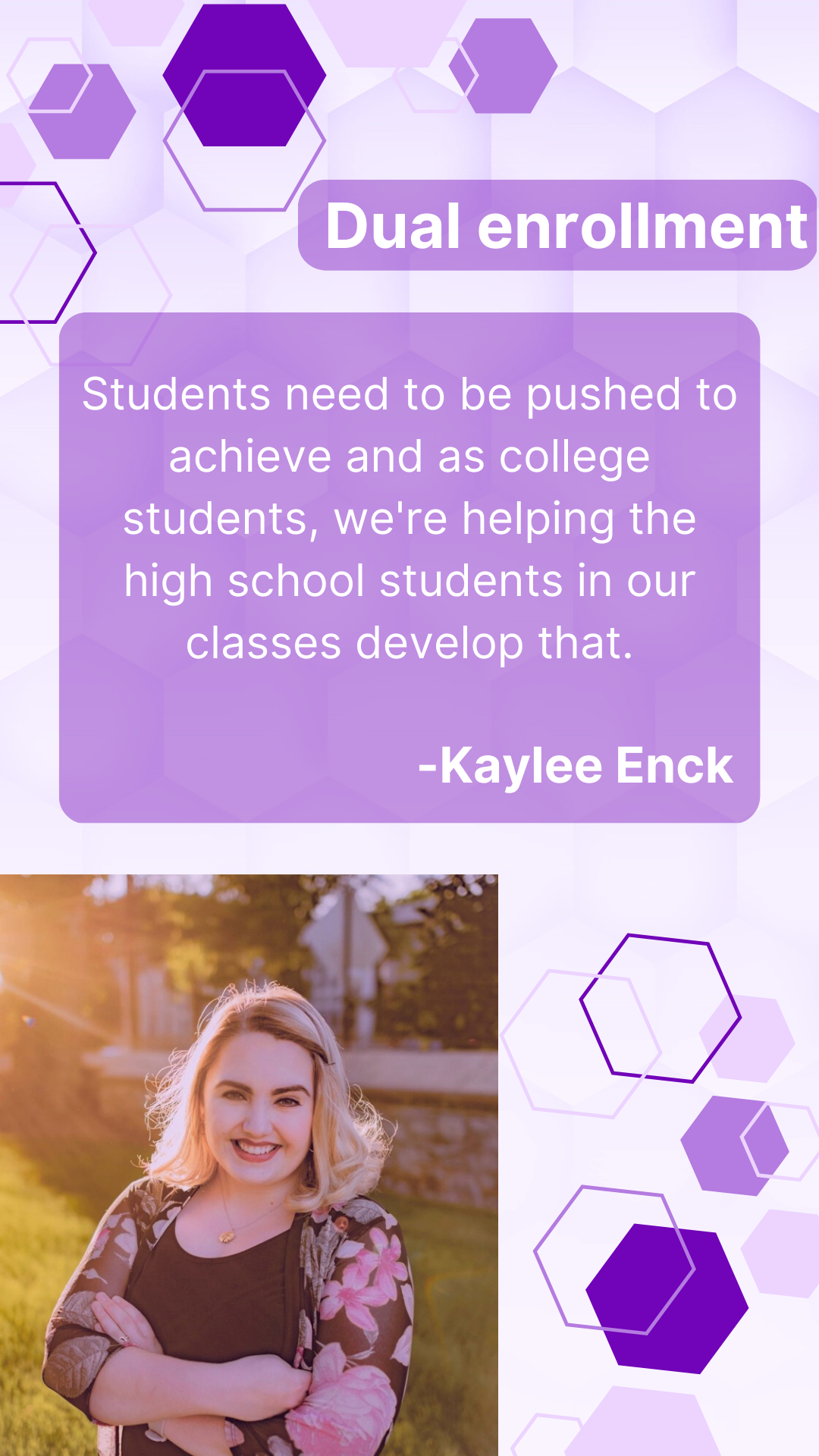
A 2012 study (Hughes & Edwards) found faculty perceived their dual-enrolled high school students were less mature than their older classmates. Hughes and Edwards (2012) found, “Whereas these students’ academic “college readiness” may be adequate, their affective readiness to participate in college courses two years before high school graduation may present challenges that could require significant support.”
Increased support can take several forms that can be built into the instructional design of a course. Instructors may need to adjust resources or their delivery, especially videos. High school students often work on their college courses during their school day, when districts can block videos. Students may need the videos emailed or texted to access them.
Work the Syllabus
Dual-enrolled high school students may need support and coaching to adjust to the volume of reading and work demanded in college courses. Clarify expectations such as deadlines, late work, grades, rubrics, and participation in the syllabus. But, as college syllabi can be new to high school students, there are tools to ensure they engage with the information in the first week of the course.
- Create an open-book online quiz with questions about the syllabus including deadlines, project expectations, office hours, contact information, and weekly participation.
- Create a video and infographic-style overview of the main points of the syllabus.
- Have students answer questions about the course expectations and challenges they may face in the first week’s discussion.
Use Announcements for Attendance Reminders
Just like college students who need to travel for their school-related activities, high school students may have commitments at their schools that occasionally prevent their attendance or participation. There may also be holidays high schools observe that the college does not.
Create standing announcements for these days:
- Remind students when specific holidays are not days off for the college.
- Remind students that an assignment is due over a holiday.
- Remind students that if they miss an in-person class or are traveling, their assignments are due, or an alternative assignment may be required.
FERPA and Communication
Another challenge for families is that unlike high school, where communication can go between teachers and parents, communication needs to remain between instructors and students in college. Add links to the school’s policies on privacy and FERPA to the syllabus and first week’s announcements.
Student Perspective
Kaylee Enck asserts that dual-enrolled students need to take responsibility, too. Enck started her academic career at Messiah University as a high school senior. She’s an example of a student who got college courses done early. Plus, her positive experience at the school led her to continue her education there. But Enck cautions high school students. “If you are a high schooler who wants to do this you have to understand professors are not going to hold your hand.”
Enck notes the support and encouragement from professors while she was in high school as a reason to continue her education and for choosing her degree program. She also argues instructors should not make things easier for younger students. Instead, she suggests it’s an opportunity to rise to new challenges. Now that she’s graduating college, Enck says, “High school students need to realize that the people already in the programs are talented…Students need to be pushed to achieve and as college students, we’re helping the high school students in our classes develop that.”
There are several ways instructors and course design can both support and challenge students.
- Share links to student success/support services in the syllabus, course information, and first week’s information. Include in the syllabus overview quiz or discussion.
- Offer coaching to students with feedback on assignments early in the semester to help them meet expectations.
- Post office hours and contact information in the syllabus, course information, and first week to ensure students know they can meet in person or virtually, depending on the course delivery.
- Break down complex concepts and theories from textbooks with infographics, real-world examples, and case studies instead of always demanding textbook reading.
- Offer multiple types of assessment.
- Be mindful that many high schools use MLA for citations and references. Provide students with library links and resources if the college or program requires APA, Harvard, or Chicago styles.
- Create video announcements from instructors or student success and support staff so students can see and hear from real people that the college is offering support.
While it’s essential instructors and the college make clear they are available for support, Enck says the burden should be on students to contact instructors. She suggests, “Take advantage of office hours and get to know professors. They’re not robots or teaching machines and they want to build relationships, too.”
Research shows dual enrollment is good for students and colleges. Students are more likely to continue their education with the institution and graduate, which is a win for everyone.
If your institution has dual-enrolled students, be mindful of the unique challenges of high school students and consider how to help them succeed in their college-level courses. Many of The Babb Group’s instructional designers are also faculty and understand how to design for all learners to support faculty and students in meeting learning objectives.
Sources:
Hughes, K. L., & Edwards, L. (2012). Teaching and learning in the dual enrollment classroom. New Directions for Higher Education, 2012(158), 29-37.
https://www2.ed.gov/programs/slcp/finaldual.pdf
https://www.insidehighered.com/quicktakes/2019/02/06/new-federal-data-dual-enrollment
https://www.nacep.org/docs/briefs/An%20%26%20Taylor%20%282019%29.pdf
https://todayslearner.cengage.com/what-i-learned-as-a-dual-enrollment-instructor/
Angela Britcher
Latest posts by Angela Britcher (see all)
- Enhancing First-Year Experiences in Higher Education - August 1, 2024
- Enhancing Education with Virtual Reality: A Hands-On Approach - June 27, 2024
- Higher Education Trends: Insights from Our COO, Sheila Fry - June 13, 2024